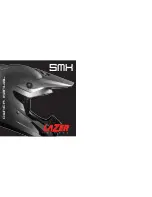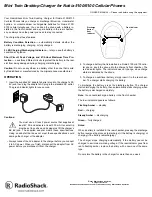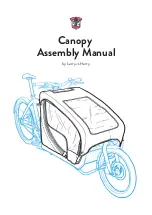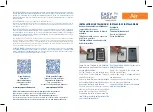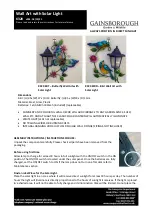
Engine Maintenance
96
Engine Fuel System
The fuel system used on these diesel engines is a
high pressure system used in conjunction with a
prechamber.
The components of the fuel system are:
•
Fuel tank (may be the truck fuel tank)
•
Electric Fuel pump
•
Fuel filter
•
Injection pump
•
Injection nozzles.
Operation
A 10 psig (69 kPa) electric fuel pump pulls fuel
from the fuel tank through a prefilter, then pushes
it to the fuel filter, and to the injection pump. The
prefilter is designed for diesel fuel and is the only
type that should be used.
The injection pump raises the pressure of the fuel
and meters the correct amount of fuel to the
nozzle at the correct time. The increased fuel
pressure will lift the spring loaded nozzle to admit
fuel into the combustion chamber.
Maintenance
The fuel system is relatively trouble free, and if
properly maintained will usually not require major
service repairs between engine overhauls.
The most common cause of fuel system problems
is contamination. It cannot be stressed enough that
the fuel must be clean, fuel tanks must be free
from contaminants, and the fuel filter must be
changed regularly. Any time that the fuel system
is opened up, all possible precautions must be
taken to keep dirt from entering the system. This
means all fuel lines should be capped when open.
The work should be done in a relatively clean
area, if possible, and the work should be
completed in the shortest time possible.
NOTE: The injection nozzles must be tested (and
repaired if necessary) at least every 3,000 hours
in accordance with EPA 40 CFR Part 89.
Normal conditions are considered to be the use
of clean high quality fuel, no used oil blending,
and regular maintenance of the fuel system
according to the Maintenance Inspection
Schedule. Refer to the TK270, TK370, and
TK376 Overhaul Manual TK 53163 for injection
nozzle testing and repair procedures.
Thermo King recommends that any major
injection pump or nozzle repairs be done by a
quality diesel injection service specialty shop. The
investment in equipment and facilities to service
these components is quite high. Therefore, this
equipment is not found in most repair shops.
The following procedures can be done under field
conditions:
•
Bleeding air from the fuel system
•
Maintenance involving the fuel tank and filter
system
•
Engine speed adjustments
•
Electric transfer pump replacement or repair
(10 psig [69 kPa] pump with diesel filter)
•
Injection line replacement
•
Pump timing
•
Nozzle spray pattern testing and adjustment
•
Minor rebuilding of nozzles.
Bleeding the Fuel System
The fuel system will have to have the air bled out
if the engine runs out of fuel, if repairs are made
to the fuel system, or air gets into the system for
any other reason.
NOTE: MAKE SURE to keep the fuel tank vent
open. If the vent becomes clogged, a partial
vacuum develops in the tank, and this increases
the tendency for air to enter the system.
Proceed as follows:
1. Loosen the bleeder screw on the return fuel
fitting of the injection pump.
Summary of Contents for UT-1200
Page 10: ...Table of Contents 10...
Page 20: ...Safety Precautions 20...
Page 76: ...Operating Instructions for Premium HMI Control Panel 76...
Page 88: ...Electrical Maintenance 88...
Page 98: ...Engine Maintenance 98 Figure 167 Fuel Components...
Page 142: ...Refrigeration Service Procedures 142...
Page 148: ...Clutch Maintenance 148...
Page 150: ...Structural Maintenance 150...
Page 162: ...Wiring and Schematic Diagrams Index 162...
Page 163: ...163 Schematic Diagram Page 1 of 2...
Page 164: ...164 Schematic Diagram Page 2 of 2...
Page 165: ...165 Wiring Diagram Page 1 of 5...
Page 166: ...166 Wiring Diagram Page 2 of 5...
Page 167: ...167 Wiring Diagram Page 3 of 5...
Page 168: ...168 Wiring Diagram Page 4 of 5...
Page 169: ...169 Wiring Diagram Page 5 of 5...































